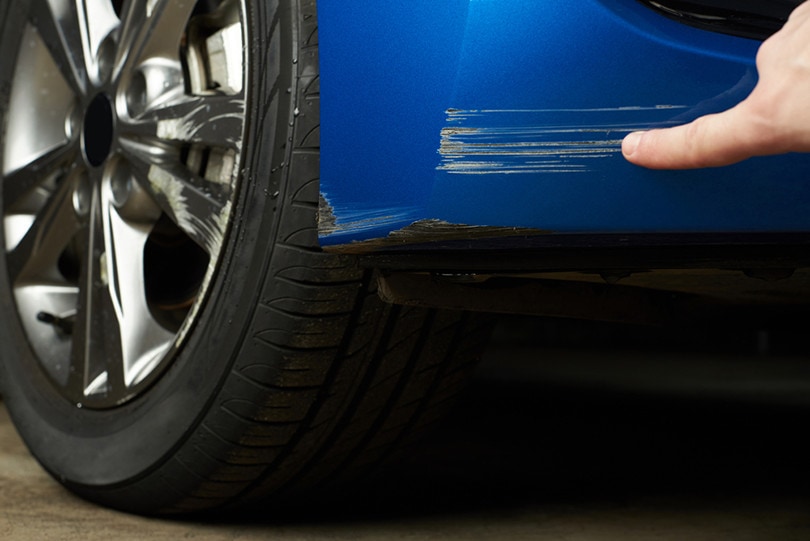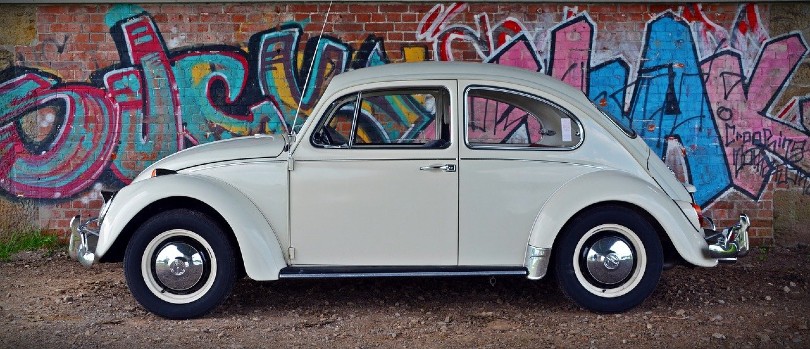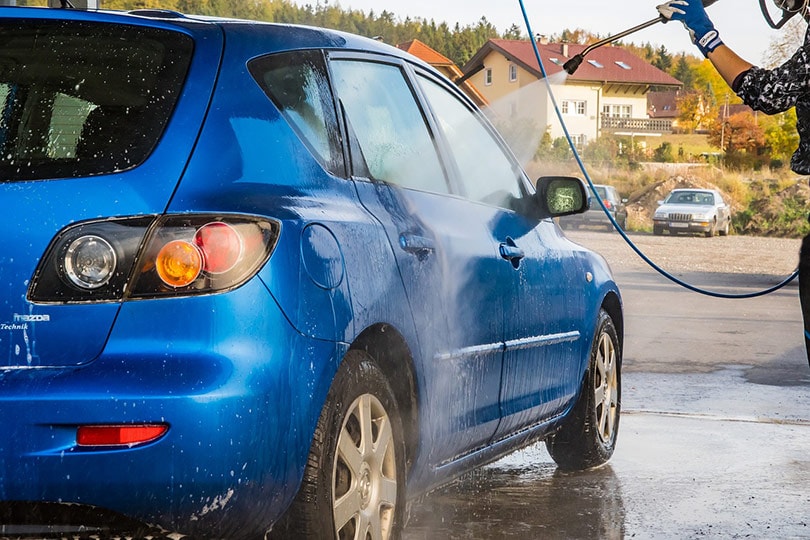How to Get Paint Off a Car in 6 Easy Steps (with Pictures)
-
Ed Malaker
- Last updated:

One of the most frustrating things about owning a new car is when someone hits your car, leaving unwanted paint on the bumper or other areas of your vehicle. If this has happened to you and you are looking for a safe and effective way to get your car looking new again, keep reading as we provide you with a step-by-step guide to eliminating it without using expensive products.

How to Get Paint Off a Car: Preparation

Assess the Damage
Before you do anything, we recommend looking over the damage carefully to see if you can repair it. A car finish usually comprises several layers, including a primer, base coat, and clear coat. The clear coat gives the car its shine, and the good news is that it can be surprisingly thick. If the damage is limited to the clear coat, you should be able to remove it. However, if you notice damage to the paint, we recommend taking it to a professional. Damage to the inner layers might result in rust, and it will be harder to fix without paint.
Gather Supplies
If the damage looks repairable, the best way to get started is by gathering the supplies that you need so you don’t need to stop what you are going after you get started.
Tools and Supplies
- Automobile scratch remover
- Microfiber towels
- Sandpaper
- Car wax
 Step-by-Step Guide to Getting Paint Off a Car
Step-by-Step Guide to Getting Paint Off a Car
1. Wash the Car
With your supplies assembled, wash the car to remove any dirt and debris. Scrub the area with the unwanted paint using a clean microfiber cloth — you might get lucky and see most of the paint come off without further effort.

2. Light Sanding
If there is a large amount of unwanted paint on your vehicle, you can begin to remove it using fine-grit sandpaper. Sandpaper grit is listed with a number — the higher the number, the finer the grit. Use something with a number higher than 3,000 to start. Rub gently in the scratch direction to start lifting the unwanted paint. Try to apply the sandpaper only to the unwanted paint where possible, so you don’t do any additional damage to the clear coat.
3. Scratch Remover
If there is only a small amount of paint or if you removed most of it with sandpaper, scratch remover can be a great product to help you finish the job. There are several brands that you can choose from, and they all work about the same. A polishing compound contains mild abrasives to gently lift the paint while smoothing scratches in the clear coat. You apply the compound to your vehicle with a microfiber cloth. Gently rub it in until the paint is gone and the surface begins to shine. You may need to reapply it several times to remove the paint completely. After each attempt, clean off the polish and allow it to dry before reassessing the surface to make sure it’s working and not making things worse.
4. Touch-Up Paint
If the scratch goes through the clear coat but is limited to a tiny area, you might be able to use touch-up paint to hide the blemish and protect the metal. You can usually purchase touch-up paint for your vehicle by visiting the local automotive shop, where they will help you get the right color for the make and model of your vehicle. Then, apply it with a small brush or a special pen.
5. Wax
With the paint removed, it’s time to add wax to the vehicle, especially if you used touch-up paint. The wax will add an extra layer of protection and may even help hide blemishes. Car wax also adds UV protection to your finish, which can help preserve the color, especially if the car spends most of its time in hot parking lots.
6. Rewash
We recommend washing the car again and using a clean microfiber cloth over the area to ensure that the paint is gone once the wax is applied. If you still see paint, you will need to repeat steps four and five until you are successful. Unfortunately, it’s easy to get frustrated and begin applying too much pressure or working too quickly, which can worsen the situation. If you see that your work is not improving things, stop what you’re doing and take the vehicle to a professional.
Do I Need to Cover the Lights and Tires When Removing Paint?
No, the scratch remover is a paste and doesn’t drip or run, and you should use sandpaper with precision, sanding only the areas that need it, so you shouldn’t scratch lights, chrome, or anything else. However, if the area that you are sanding is near something that can scratch or scuff easily, applying masking tape for additional protection wouldn’t hurt.
How Much Does It Cost for a Professional Paint Job?
The cost of a paint job can vary significantly depending on many factors. For example, the make and year of the vehicle will affect the price because it can be hard to find certain colors. Some parts of the car are also easier to paint than others. Your final price can be anywhere from $150 to over $1,000.

Summary
Removing unwanted paint from your car is not difficult, but it can take quite a while. If you apply too much pressure when sanding or using the scratch remover, you can scuff the area around the scratch, making it more noticeable and requiring more work to repair. A light touch and plenty of patience are essential for a successful result.
Featured Image Credit: PixieMe, Shutterstock
Contents
 Step-by-Step Guide to Getting Paint Off a Car
Step-by-Step Guide to Getting Paint Off a Car
